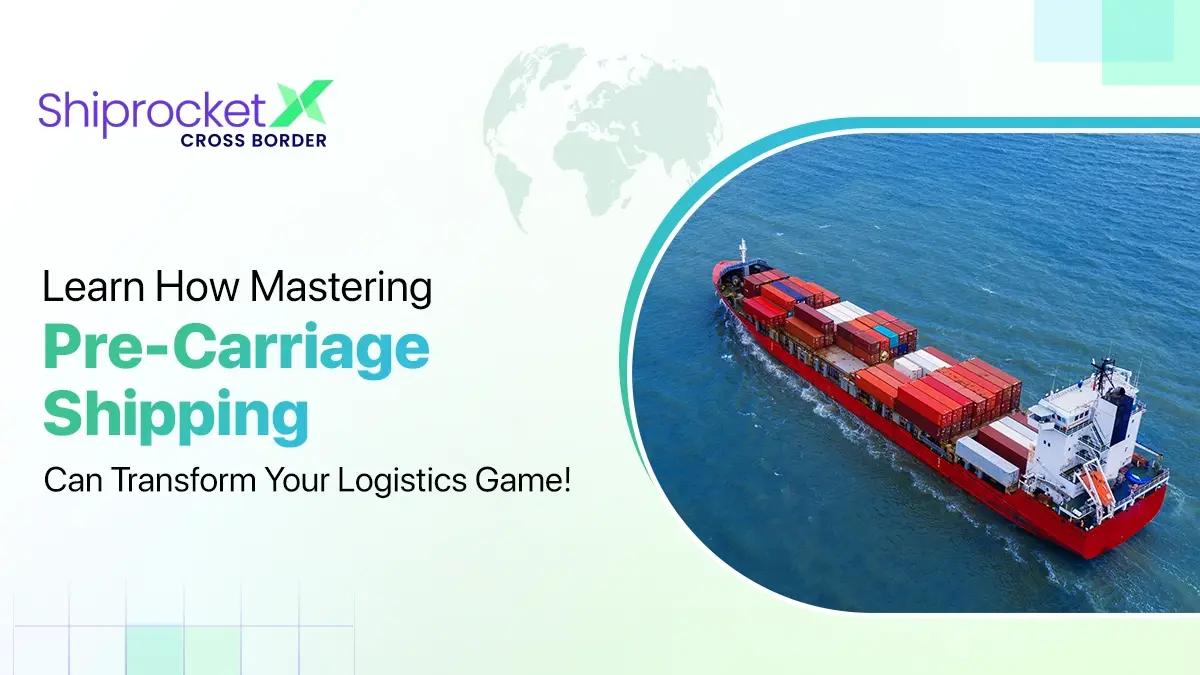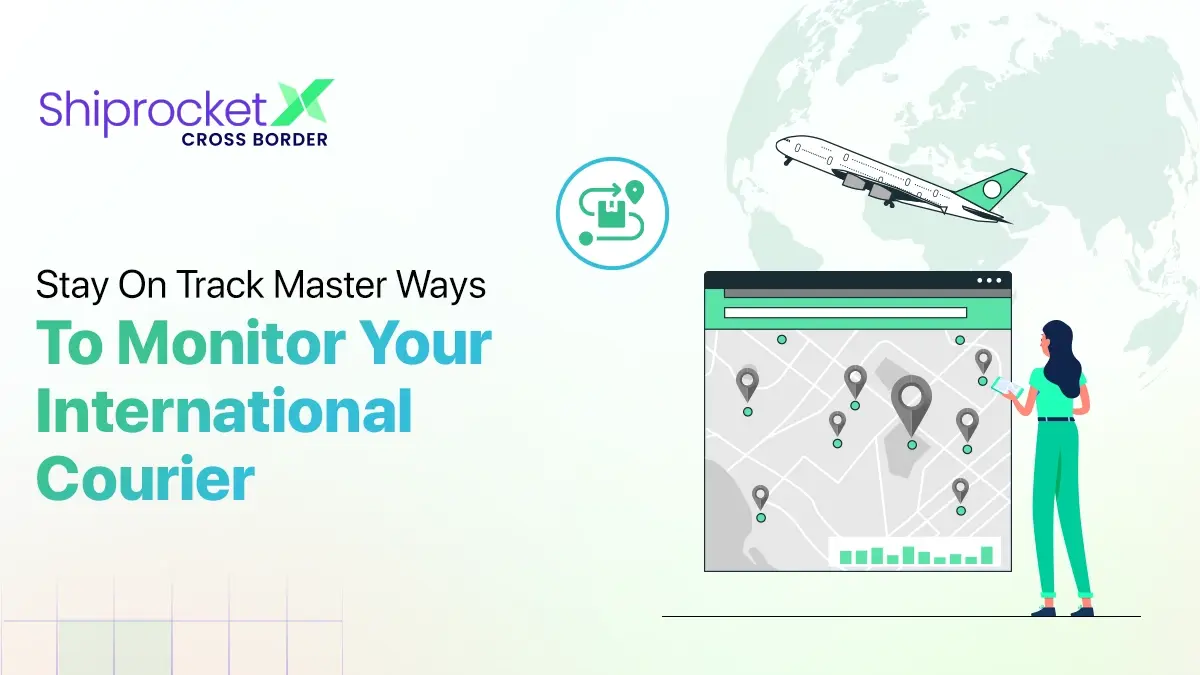The Role of Digitalisation in Freight Forwarding
- Freight Forwarding: Understanding its Role and Function
- Conventional vs. Digital Approaches in Freight Forwarding
- Advantages of Digital Road Freight Forwarders
- Managing Day-to-Day Tasks in Digital Freight Forwarding
- Tracking Progress: Real-Time Visibility and GPS in Road Freight Logistics
- Using Analytics for Forecasting and Planning
- Overcoming Digitalisation Challenges in Forwarding
- Exploring the Future of Digitalisation in Freight Forwarding
- Driving Force Behind Digitalisation in Freight Forwarding
- 5 Trends Shaping Digital Freight Forwarding
- Examining the Impact on Freight Forwarding and Logistics
- CargoX: Your Reliable Solution for Cross-Border Shipment
- Conclusion
Freight forwarding is an important component in the complex global supply chain process. It helps facilitate the swift movement of goods across borders efficiently and economically. Digitalisation in freight forwarding has enhanced the efficiency of the process by thousands of manifold.
The market for digital freight forwarding is projected to reach a valuation of USD 76.24 billion by 2028, from its estimated USD 28.47 billion in 2023.
In this blog, we have explained the various aspects of digital freight forwarding. It also explores the power of digitalisation and how it transforms or shapes the future of the logistics industry.

Freight Forwarding: Understanding its Role and Function
Freight forwarding is the process of transporting goods by import-export companies. This is often facilitated by freight forwarders. They do not move the goods themselves but act as intermediaries between the companies and different transportation services to organise and arrange shipping. They ensure that the goods arrive at the destination efficiently and economically.
Freight forwarding companies provide various services to ease the shipping process for businesses, including organising transportation, negotiating rates, booking cargo space, optimising routes, preparing documentation, etc. They combine small shipments with large ones to reduce costs and utilise space. Freight forwarders use tracking technology to provide real-time updates about shipments, increase supply chain transparency and protect against potential losses.
Conventional vs. Digital Approaches in Freight Forwarding
The differences between conventional vs digital approaches in freight forwarding are as follows:
| Aspect | Conventional approach | Digital approach |
|---|---|---|
| Communication | It is dependent heavily on phone calls, emails, faxes, etc. | It uses digital platforms, real-time messaging apps, automated notifications, etc., for seamless communication. |
| Documentation | Conventionally paperwork included the bills of landing, invoices, customs, forms, etc. | It uses e-documentation, like digital forms, e-air waybills, etc., which reduces paperwork and manual errors. |
| Data management | Paper-based records, data, spreadsheets, etc., which are prone to errors and data loss. | Centralised digital data is managed with automated data entries, which ensures accuracy and easy access to all the information. |
| Visibility | Conventionally there were limited tracking abilities and depended on manual updates from carriers. | GPS, IoT devices, advanced tracking software, etc., are used for real-time tracking, which provides full visibility of the shipment. |
| Cost management | The cost of operations was higher because of manual labour and potential human errors. | The cost of operations is low here because of automation and optimised process which also reduces human errors. |
| Route optimisation | It is dependent on human experts and traditional methods. | It uses AI and machine learning to plan routes, considering factors such as traffic, weather, fuel efficiency, etc. |
| Supply chain integration | Conventionally limited integration was done with other supply chain partners and systems. | The integration here is seamless as it provides end-to-end visibility and coordination between different supply chain management systems. |
| Customs clearance | They manually submit the customs documentation. | They submit documents through digital customs platforms. |
| Sustainability | It has a higher carbon footprint due to the high usage of paper and inefficient processes. | It focuses on reducing the environmental impact by using e-documentation and optimised logistics. |
| Security | It was not secured much as it was prone to data breaches and loss of documents. | It has enhanced security with digital records and blockchain technology, which enables transparency and secure transactions. |
| Scalability | It is difficult to scale operations conventionally as all the processes are manual. | It can be scaled highly with cloud-based solutions and digital platforms. |
| Efficiency | It is a time-consuming process with possible delays due to manual handling. | It has automated processes that increase speed, reduce delays, and enhance overall efficiency. |
| Customer experience | There is a slower response time and limited transparency for customers. | They deliver enhanced customer experience with real-time updates, easy access to information, and faster response time. |
Advantages of Digital Road Freight Forwarders
Digital road freight forwarders offer several advantages over traditional or conventional freight forwarding methods. These include:
- Digital platforms make it easy to streamline freight forwarding, reducing manual paperwork and automating tasks, leading to faster and more efficient operations.
- Customers have real-time visibility and transparency about the location and status of the shipments throughout the process.
- Customers can easily book and manage shipments online while saving time, avoiding the need to contact forwarding agents.
- Digital platforms have lower overall costs, which allows them to offer competitive prices to customers.
- Digital road freight forwarders often provide customers with customised solutions according to their needs, allowing them to choose flexibly from the shipping options.
- Digital road freight forwarding allows optimisation of routes and reduces unnecessary transportation costs, which helps minimise the environmental impact of the shipping process.
- Road freight forwarders offer options to integrate with other software systems, such as CRMs or ERPs, to facilitate seamless communication and data exchange between different parts of the supply chain.
Managing Day-to-Day Tasks in Digital Freight Forwarding
Digital freight forwarding involves a combination of technological tools, operational processes, human resources, etc., to make sure that there is a smooth flow of shipments from one location to another. The various steps include:
- Placing an order: The process of freight forwarding is initiated when the customer places an order for shipping services through the company’s website or app. The client must add the origin, destination, type of cargo, transportation mode, special requirements, etc.
- Documentation: After the order is placed, the digital freight forwarding platform generates important documents like bills of landing, customs declarations, invoices, etc. These are made as per international regulations and standards to reduce errors.
- Selecting carriers: After the documentation is done, options are given to select carriers for transporting shipments according to cost, transportation time, service quality, etc.
- Tracking: The shipments can be tracked on the shipping company’s website. It provides real-time visibility to customers and freight forwarders. The shipping companies use advanced tracking technology, such as GPS, RFID, IoT, etc., to ensure accuracy and reliability.
- Communications: Efficient communication is important for managing the daily tasks of digital freight forwarding. It helps with conveying information between the client, freight forwarder, carriers, stakeholders, etc., involved in the shipping process.
- Customs clearance and regulatory compliance: Digital freight forwarding platforms help with the customs clearance process by automating documentation, tariff classification, other regulatory compliances, etc.
- Billing: Invoicing and transactions are integrated with accounting systems and electronic payment gateways to simplify the billing and reconciliation process.
- Customer support: Digital freight forwarding platforms offer customer service and support to address concerns, inquiries, and issues that may have arisen during the shipping process. This may include tracking the order, solving issues, offering guidance, etc.
Tracking Progress: Real-Time Visibility and GPS in Road Freight Logistics
The explanation of how the tracking of vehicles is done in real-time by the freight forwarding companies is mentioned below:
- GPS (Global Positioning System) technology: In road freight, this is used to track trucks, trailers, or other vehicles.GPS technology depends on a network of satellites to accurately determine the location of the vehicle equipped with GPS receivers. In real-time tracking, it continuously collects location data from these receivers and transmits it to a central system or platform of the freight forwarding company. This allows them to monitor the movement of vehicles carrying the goods. They can easily arrange for any alternate transportation if the vehicle gets stuck somewhere on the way.
- Web-based tracking platforms: Freight forwarding companies use web-based tracking platforms or mobile apps, which allow customers and businesses to access real-time information about their shipments. This helps them get an idea of the expected delivery time.
- Real-time monitoring: The central monitoring system of the freight forwarder receives and processes data from tracking devices in real-time, allowing logistics managers and customers to monitor or track shipments. They can easily reroute or arrange for alternate transportation in case the vehicle gets stranded due to some roadblocks or engine breakdown.
- Route optimisation: GPS data can also help optimise transportation routes and schedules as per traffic, road closures, weather conditions, etc. This helps freight forwarders to minimise transportation time, reduce fuel consumption, and lower costs and service levels.
- Integration: The tracking data is also integrated with other supply chain systems, such as warehouse management, inventory management, order management, etc. This allows seamless communication and data exchange in different parts of the logistics network, making it easy for the freight forwarding company to manage timely goods transportation.
Using Analytics for Forecasting and Planning
Analytics helps organisations forecast upcoming trends by analysing historical data and using predictive models to project future demands, sales, inventory, etc. This data-driven approach helps businesses make informed decisions, use resources, and eliminate risks. Forecasting demand is dependent on analytics to predict customers’ needs based on historical sales, market trends, seasons, etc. This helps organisations optimise their inventory, production schedules, transportation planning, supply chain logistics, route efficiency, carrier performance, etc.
Using analytics to forecast and plan can greatly improve efficiency and decision-making in the freight forwarding sector. Businesses can improve route optimisation by employing data-driven insights. The best shipping routes can be found using advanced analytics, which takes into account variables including costs, travel durations, and possible delays. This increases overall logistical efficiency while reducing transit costs and timeframes.
Overcoming Digitalisation Challenges in Forwarding
There are some strategies that can be adopted by freight forwarders to overcome the challenges of digitalisation. These include:
- Provide training and resources to employees to help them understand the technology so they can easily adopt its use. Companies can offer incentives and support to help them become familiar with digital tools.
- Companies can implement cybersecurity measures to protect data and access by including regular security audits, encryption, and employee training on cybersecurity.
- Businesses can choose digital solutions that are compatible with existing systems and processes. They can also invest in integrating tools and APIs to help with data exchange between different systems.
- Streamlining workflows and processes using digital tools and automation can help reduce redundant tasks, optimise resource allocation, redesign workflows, etc.
- Help employees improve their skills with open communication, feedback, addressing concerns, etc.
- Stay updated with the regulations and international compliance requirements related to digitalisation in freight forwarding. This ensures that the industry standards and regulatory requirements are met.
- Constantly monitor the performance of the digital initiatives in the market. Collect feedback from employees and stakeholders to track performances and adjust further.
- Companies can collaborate with partners and suppliers in the supply chain to face the challenges of digitalisation. They can share best practices, exchange insights, and work together to address the challenges and work on them.
Exploring the Future of Digitalisation in Freight Forwarding
Digitalisation in freight forwarding is revolutionising the entire logistics industry. Let’s explore what can be expected in the future:
- Automation and integration of AI technologies will play an important role in the future. They will help analyse a wide range of data to optimise routes, predict demands, and suggest efficient transportation modes.
- IoT sensors will be embedded in cargo, trucks, and warehouses to provide real-time tracking and monitoring of shipments. The data collected in this study will improve efficiency, minimise delays, and increase transparency throughout the supply chain.
- In the future, blockchain technology will be used to offer transparency and security in freight forwarding by maintaining and creating records of documents and transactions. This technology will help to streamline the customs clearance process, minimise fraud, and simplify supply chain processes in the future.
- There will be digital platforms and markets to connect shippers with carriers and logistics providers by facilitating smoother transactions and features like instant quotes, booking, tracking, etc.
- Augmented reality (AR) and virtual reality (VR) technologies can also be used in the future for training purposes. Freight forwarders can use these to provide learning experiences to their staff.
- Digitalisation in freight forwarding will also focus on sustainability, greener transportation modes, and route optimisation to reduce carbon emissions.
Driving Force Behind Digitalisation in Freight Forwarding
There are several factors that drive the digitalisation in freight forwarding, such as:
- Customers expect and demand increased real-time visibility, transparency, and efficiency in supply chains. Digitalisation in freight forwarding will allow companies to meet these expectations.
- Globalisation has made the supply chain more complex, as it involves different parties from different locations. Digitalisation will help forwarders manage complexity by improving communication, coordination, and transparency.
- Advances in technology, such as blockchain, AI, IoT, and cloud computing, have made digitalisation more accessible and economical.
- Freight forwarders are constantly under pressure to reduce shipping expenses while maintaining quality. Digitalisation offers opportunities to optimise transport routes and tasks and streamline operations to reduce costs and increase profits.
- Freight forwarders must ensure compliance with regulations and standards, such as customs and safety requirements. Digitalisation ensures this by automating the processes required by regulatory bodies.
5 Trends Shaping Digital Freight Forwarding
The five trends shaping the digital freight forwarding are:
- Digital marketplaces: The popularity of digital platforms and marketplaces is transforming freight forwarding services. These digital places connect shippers with carriers and logistics providers and offer features like online booking, instant quotes, tracking documentation, etc.
- Data analytics: Data analytics plays an important role in digital freight forwarding by providing suggestions for various aspects of the supply chain. Advanced analytics techniques include predictive modelling and machine learning for optimising routes, identifying demands, mitigating risks, and improving operational efficiency.
- Blockchain technology: Digital freight forwarding is adopting blockchain technology to increase security, transparency, and trust in the supply chain. This improves transparency and visibility, reduces fraud and disputes, and manages the process of customs clearance and documentation.
- Automation and AI: AI technologies and automation are the driving trends in digital freight forwarding. They help in various processes like route planning, carrier selection, load optimisation, and pricing. Automation of repetitive tasks such as data entry, invoice generation, documentation, reducing manual errors, etc., helps with operational efficiency.
- Real-time tracking and the Internet of Things (IoT): The IoT devices and sensors have revolutionised the tracking and monitoring of digital freight forwarding. These are added to trucks, cargo containers, warehouses, and other assets that provide real-time visibility of the location, condition, and status of the shipment throughout the transportation process. Such tracking solutions help companies optimise routes, ensure compliance, and improve asset utilisation.
Examining the Impact on Freight Forwarding and Logistics
Digitalisation has a significant impact on various sections of the freight forwarding industry, such as:
- Digitalisation streamlines freight forwarding and logistics tasks like booking, documentation, tracking, invoicing, etc. This reduces manual errors, paperwork, and processing time.
- Digital tools and automation improve operational efficiency in freight forwarding by automating various documentation works, optimising routes, consolidating shipments, and other processes, resulting in faster delivery, lower costs, and better resource efficiency.
- It enhances the customer experience by offering online booking, real-time tracking options, self-service portals, and more. Shippers and customers can also access information, communicate efficiently, and manage shipments, which increases their satisfaction and loyalty.
- Digitalisation provides better visibility of the supply chain, which allows companies to track shipments, look at inventory levels, receive updates, etc.
- Through automation, improved resource management, and optimisation, digitalisation helps minimise the costs of freight forwarding and logistics. The reduced manual work eliminates inefficiencies and improves profitability.
- Digitalisation helps freight forwarders and logistics companies innovate and adapt constantly, using technologies like blockchain, IoT, AI, etc. This helps them to stay competitive and meet customers’ evolving needs.
- Digital platforms help companies collaborate and communicate with different people from the supply chain, like carriers, suppliers, shippers, regulatory authorities, etc. They can share real-time data and progress with each other, which improves coordination, reduces delays, and increases efficiency.
CargoX: Your Reliable Solution for Cross-Border Shipment
CargoX is your premier partner for international air cargo forwarding, expertly catering to the needs of eCommerce businesses of all types. Operating in over 100 countries, they enable access to virtually any global market, facilitating your global expansion. Their services are tailored to provide personalised shipping solutions, with a particular focus on bulk shipments. By prioritising both speed and security, CargoX ensures that your products are delivered efficiently and reliably to international customers, guaranteeing smooth freight forwarding.
Conclusion
The freight forwarding and logistics industry is undergoing a major shift because of digitalisation. It is becoming evident that digital transformation is important for survival and success in the modern market. By using the power of digital technology and tools, advanced analytics, automation, etc., freight forwarders are unlocking new opportunities and possibilities for delivering a better customer experience. They are in the phase of the digital revolution with a commitment to innovate and improve their services.





